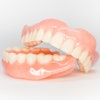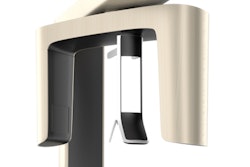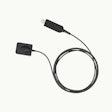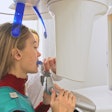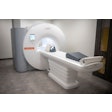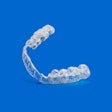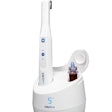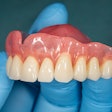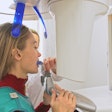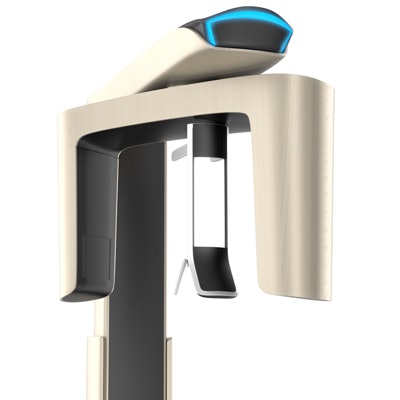
Accurate diagnosis of vertical root fractures in endodontically treated teeth is a crucial but challenging task. That's why researchers evaluated the accuracy of cone-beam CT (CBCT) for these fractures and also ways to improve its accuracy in suspected cases.
The new study findings suggest that CBCT may be more accurate for diagnosing vertical root fractures than traditional radiographs. However, there is still room for improving CBCT accuracy, which is important to prevent misdiagnosis.
"Various studies have demonstrated the superior accuracy of CBCT for diagnosing root fractures in teeth without intracanal filling material," wrote the authors, led by Débora De Martin e Silva from the Federal University of Juiz de Fora School of Dentistry in Brazil (Journal of Endodontics, November 16, 2017). "However, in cases where the roots are filled with high-density materials, such as posts and cast metal cores, artifacts can appear in the tomography images, making the exam difficult to interpret."
CBCT for diagnosing vertical root fractures
Missing a vertical root fracture diagnosis can lead to periodontal disease, while a false positive may result in an unnecessary extraction, which is why accurate diagnosis is crucial. The literature has generally established that CBCT is either equal or superior to traditional radiographs when it comes to diagnosing root fractures in teeth that have not been endodontically treated. But the results are mixed for roots that are filled with highly dense material, including metal posts, and when the fractures are in the mesiodistal direction.
Therefore, the researchers of the current study decided to add to the literature on CBCT's accuracy for these specific fractures. They also investigated ways to improve the accuracy of diagnosis, including the use of algorithmic filters and voxel size.
The researchers began by performing root canals on 40 extracted incisors and canines without previously fractured roots, decay, or wear. After endodontic treatment, the teeth were divided into four categories.
| 4 categories of teeth | ||
| Metal post | No metal post | |
| Vertical root fracture | 10 teeth | 10 teeth |
| No vertical root fracture | 10 teeth | 10 teeth |
Two dental radiology specialists evaluated periapical radiographs and CBCT images for fractures. They evaluated the certainty of their diagnosis on a scale of 1 to 5:
- Fracture definitely present
- Fracture probably present
- Uncertain
- Fracture probably not present
- Fracture definitely not present

The CBCT images proved to be more accurate than the traditional radiographs for diagnosing vertical root fractures in the mesiodistal direction. However, teeth with a metal post were still harder to diagnosis than those without metal posts, the researchers found.
"For teeth without metal posts, the scores related to the 'certainties' (scores 1 and 5) were the most frequent," the authors wrote. "For the teeth with metal posts, the most prominent was a score of 3 (uncertainty)."
Voxel, filters, and CBCT accuracy
The group also looked for ways to improve the accuracy of vertical root fracture diagnosis for teeth with metal posts. Previous studies have suggested that algorithmic filters, such as "normal," "sharpen," and "hard," can improve diagnosis, but the researchers of the current study found that this was not the case for mesiodistal root fractures in endodontically treated teeth.
"High-density objects, such as intracanal metal retainers, cause artifacts in the tomographic images displayed as radiopaque and/or radiolucent bands that may overlaps with tooth roots, simulating a nonexistent fracture or covering up a real fracture," the authors explained. "Artifacts can only be partially corrected by means of software or specific algorithms."
While filters didn't make a difference for accuracy, voxel size did. A voxel size of 0.25 mm yielded an accurate diagnosis significantly more often than a voxel size of 0.35 mm, regardless of the presence of a metal post. Using a smaller size may be beneficial for diagnosing vertical root fractures, even though the radiation level is higher, the authors suggested.
"Although we know that the smaller the voxel, the greater the radiation dose, in cases of suspected [vertical root fracture], the importance of accuracy of the diagnosis must be considered with higher-resolution images being more appropriate," they wrote. "Using lower fields of view can compensate for the dosages in these cases."

